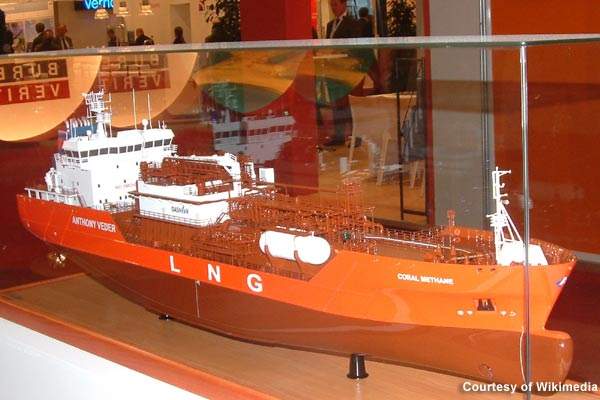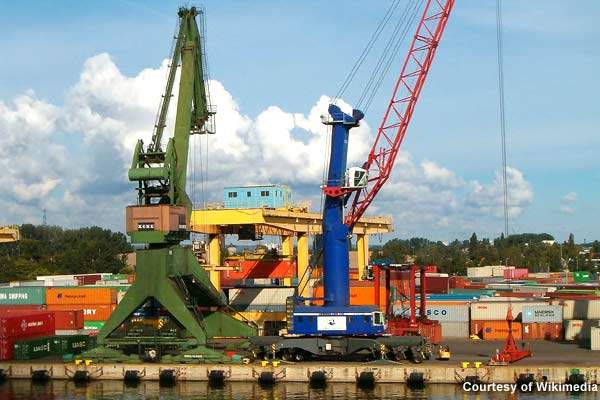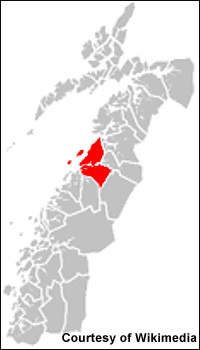Coral Methane is a multipurpose Liquefied Natural Gas (LNG) carrier developed for Netherlands-based gas transportation company Anthony Veder. It was built by Remontowa at its shipyard in Gdansk, Poland. Coral Methane was delivered in April 2009.
The multipurpose gas carrier has the capacity of 7,500m³. It is the first ship to be built for the transportation of LNG, LPG and liquefied ethylene gas (LEG). Coral Methane is the first LNG carrier in the fleet of Anthony Veder.
The ability of carrying multiple gases allows the ship owners to deploy the vessel in the transportation of various types of gases. Coral Methane entered service in May 2009 under a 15-year charter with the Norwegian energy company Gasnor AS.
Coral Methane design and features
Coral Methane is designed by TGE Marine AG. The design incorporates modern gas plant, two cylindrical cargo tanks, a dual fuel diesel electric propulsion system and associated cargo-handling equipment. The gas plant’s design is based on the TGE Ethylene Carrier standard. The manifold arrangement of the ship was designed to enhance the cargo transfers at large and small LNG terminals.
The ship is equipped with two electrical generating systems, which run on LNG cargo boil-off gas (BOG) and heavy fuel oil. It is built according to high standards and received the ‘Cleanship Super’ notation from the Bureau Veritas classification society.
The ship has an overall length of 117.8m, a molded breadth of 18.6m and a draught of 6.8m. The deadweight of the ship is 6,150t. Coral Methane can sail at a maximum speed of 15.5kt.
Coral Methane cargo systems
The cargo-handling plant includes IMO Type C insulated, pressure vessel cargo tanks designed by TGE Marine Engineering. The tanks can store LPG, ethylene and LNG, can avoid partial filling restrictions and has a secondary barrier containment system. The ethylene system design is modified to allow the carriage of LNG at -163°C. The vessel can also carry ethylene at -104°C.
The deepwell cargo pumps developed by Hamworthy Svanehoj are also modified to adapt the lower service temperature of LNG. The cargo pumps are fitted with conventional explosion-proof motors powered by frequency converters. The motors develop 210mlc in LNG service and 120mlc while handling LEG or LPG at a flow rate of 450m³/hour for both transfers. The ship is also
equipped with a booster pump.
The cargo heating/vaporising equipment includes an indirect ethylene vaporiser, a direct sea water heated LPG heater or vaporiser and an indirect LNG vaporiser. The ship is equipped with a Cascade/direct cycle reliquefaction system. The system consists of two refrigerant compressors, two cargo compressors and a suction gas heater for fuel gas. There is also a pressure swing adsorption nitrogen generation plant.
Propulsion
Coral Methane’s complete gas/diesel-electric propulsion system is designed and delivered by Rolls-Royce. The system includes two Bergen gas gensets and two Bergen diesel gensets, electric system, two Azipull 120 thrusters with pulling propellers and a bow tunnel thruster. Coral Methane is the first gas carrier to be equipped with Azipull thrusters. These units provide high manoeuvrability and fuel efficiency to the vessel. The electric drive system incorporates a low voltage water-cooled frequency converters. The two 2,500kW drives were integrated into a Rolls-Royce drive train configuration. The Bergen gas engine-powered gensets are run on Boil-Off Gas (BOG) when the ship is loaded with LNG and diesel gensets are operated while the ship is in ballast or carrying gas cargoes other than LNG.
The propulsion system comprises a diesel plant and a gas plant offers economical efficiency. Gas engines achieve a 100% reduction in sulphur oxide (SOx) and particulate emissions and around 92% reduction in nitrogen oxide (NOx) emissions in comparison with the engines burning heavy fuel oil (HFO). Gas engines also cut down carbon dioxide (CO2) emissions by up to 25%.






